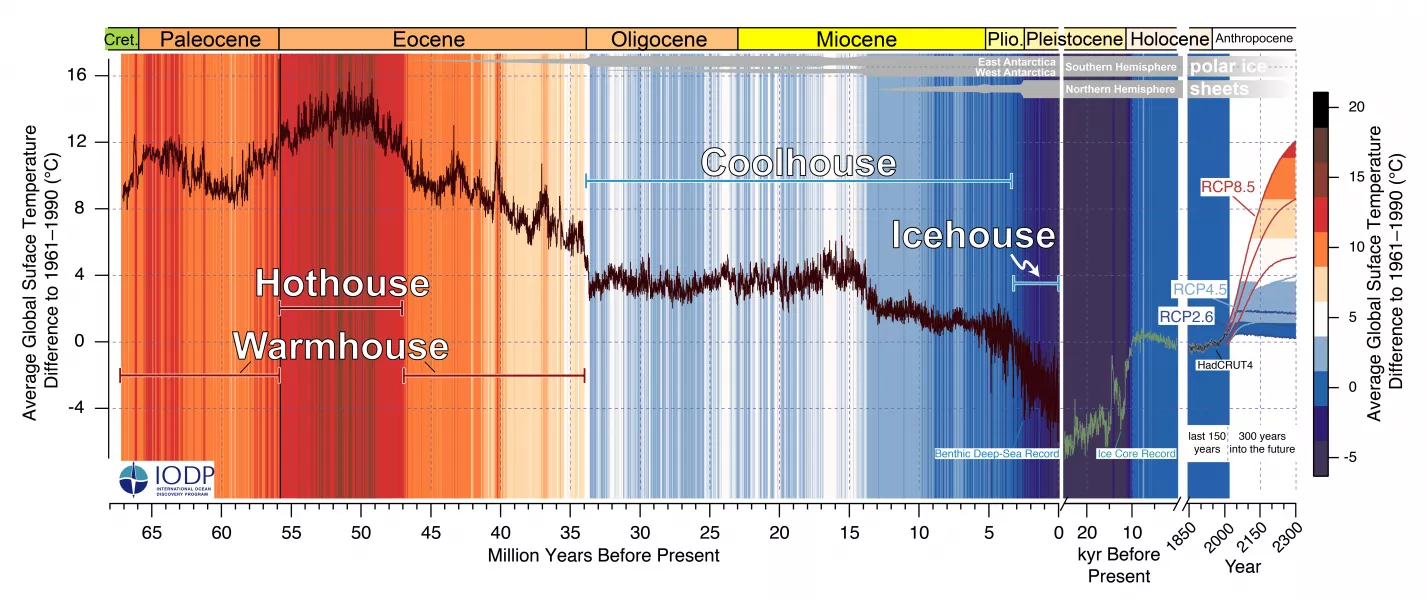According to the team, the findings reveal four distinctive climate states dubbed hothouse, warmhouse, coolhouse and icehouse.
These states are also influenced by the tilt of the Earth’s axis and the shape of its orbit around the sun, with each showing a distinct response to orbital variations, the researchers said.
Based on their findings, published in the journal Science, the team has developed a climate reference curve, called Cenogrid, to show a continuous record of the past and trace how climate has changed since the extinction of the dinosaurs.

Study co-author Dr Anna Joy Drury, of UCL Earth Sciences in London, said: “We use Cenogrid to understand what Earth’s normal range of natural climate change and variability is and how quickly Earth recovered from past events.
“While we show that the Earth previously experienced warm climate states, these were characterised by extreme climate events and were radically different from our modern world.”
An international team of researchers analysed samples collected from the ocean floor over more than five decades.
The scientists then performed a mathematical analysis to identify the four climate states associated with changes in greenhouse gas levels.
For example, the researchers said, during the Paleocene-Eocene Thermal Maximum (PETM) time period around 55 million years ago, there was rapid global warming, which drove the climate into a hothouse state associated with a massive release of carbon into the atmosphere.
Then in the late Eocene era around 34 million years ago, ice sheets began to form in Antarctica as atmospheric carbon dioxide levels began to drop and the climate transitioned to a coolhouse state, they added.
Earth's climate has gradually cooled over the last 50 million years, but the present and predicted rapid anthropogenic changes reverse this trend and, if unabated, far exceed the natural variability of the last 66 million years
Lead author Dr Thomas Westerhold, of the University of Bremen Centre for Marine Environmental Sciences in Germany, said: “We now know more accurately when it was warmer or colder on the planet and have a better understanding of the underlying dynamics and the processes that drive them.
“The time from 66 to 34 million years ago, when the planet was significantly warmer than it is today, is of particular interest, as it represents a parallel in the past to what future anthropogenic change could lead to.”
According to the researchers, the Earth’s climate has been in an icehouse state for the past three million years, characterised by warmer and cooler periods.
They say greenhouse gas emissions as well as other anthropogenic, or human-led, activities are now driving the planet towards the warmhouse and hothouse climate states that have not been seen since the Eocene period.
Dr Drury added: “Since the peak warmth of the hothouse, Earth’s climate has gradually cooled over the last 50 million years, but the present and predicted rapid anthropogenic changes reverse this trend and, if unabated, far exceed the natural variability of the last 66 million years.”







